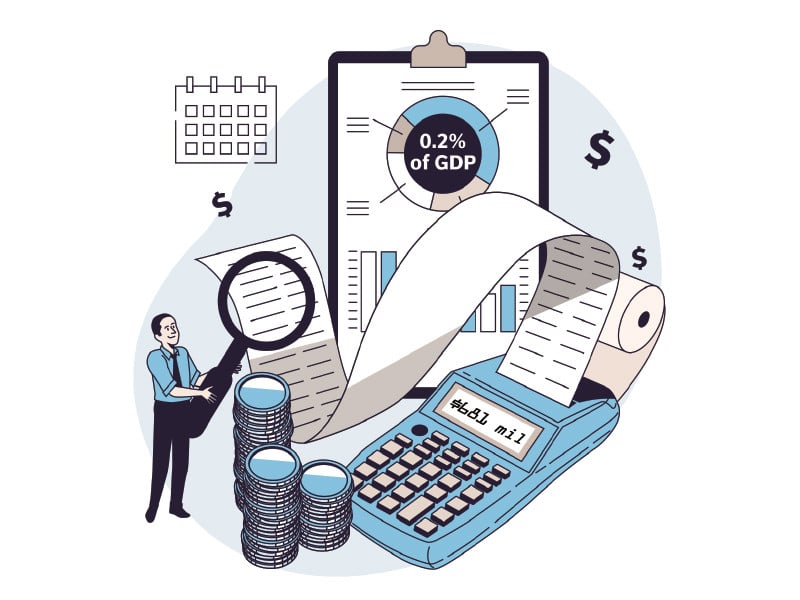By Mubarak Zeb Khan
Published in DAWN on November 08, 2022
ISLAMABAD: The share of people paying for healthcare expenses on their own, or out of pocket (OOP) made up 52.8 percent of the total health expenditure in 2019-20, up slightly went from 51.7pc in 2017-18, the National Health Account estimates released on Monday indicated.
Moreover, people spent more than the government on healthcare, around Rs775.412 billion, as against Rs468.228bn spent by the federal, provincial, tehsil and district governments 2019-20.
The data also shows that Punjab has the highest share (53pc) followed by Sindh (23pc) and KP (17pc, including FATA) while Balochistan has just (6pc) share of Pakistan’s OOP health expenditures.
OOP spending is a payment by households directly to providers to obtain services and health products. It includes purely private transactions (individual payments to private doctors and pharmacies), official patient cost-sharing within defined public or private benefit packages, and informal payments.
The National Health Accounts of Pakistan 2019-20 report, released by the Pakistan Bureau of Statistics, shows OOP spending as a share of total current health expenditure and measures the size of OOP in the total national current health spending. It shows how much the health system relies on households’ own spending to finance it.
According to the NHA report, of the total healthcare expenditures in Pakistan, 39.8pc is made by general government agents which include social security, Zakat, Baitul Mal expenditures as well.
The share of development partners/donor’s organizations in total health expenditures is almost 0.5pc.
Total health expenditure in Pakistan in the fiscal year 2019-20 is estimated as Rs1, 466bn against Rs1,206bn.
This shows an increase of Rs260bn over the fiscal year 2017-18, which is a 21.6pc increase in nominal terms as it includes inflation of health care goods and services.Statistics show that there are 1,289 public sector hospitals (114,841 beds), dispensaries 5,849 (1,077 beds), basic health units 5,472 (6,594 beds), rural health centers (10,726 beds), TB clinics 412 (141 beds), maternity and child welfare centres 752 (328 beds).
Data also shows that most of the hospitals are privately run in Pakistan which caters to OPP and has a larger share in providing healthcare in the country.
The annual per capita current health expenditures for Pakistan as per NHA 2019-20 were $40.7 or Rs6,432 while in NHA 2017-18 it was $48.1 or Rs5,283. For comparison, the respective figures for year 2019-20 reported to WHO by Iran, India, Afghanistan, Bangladesh & China are $470, $64, $66, $46 and $535, respectively.
Pakistan has been ranked as one of the most exposed nations to poverty risk among 43 countries in the Asia-Pacific region.
To address the challenge, according to the report Sehat Sahulat Programme is designed to provide financial health protection not only to poor families to bring them out of poverty but also to families above the poverty line in order to protect them from falling into poverty.
At the current level of maturity, the program is providing financial protection for indoor health care coverage only.
National Health Accounts is a macroeconomic accounting framework for revealing a country’s aggregated expenditures on health. The compilation of NHA-Pakistan reports follows international standards set by WHO and OECD. This report presents the results for the fiscal year 2019-20 which is the 8th round of such a compilation.
Earlier rounds were published for fiscal years 2005-06, 2007-08, 2009-10, 2011-12, 2013-14, 2015-16 & 2017-18





